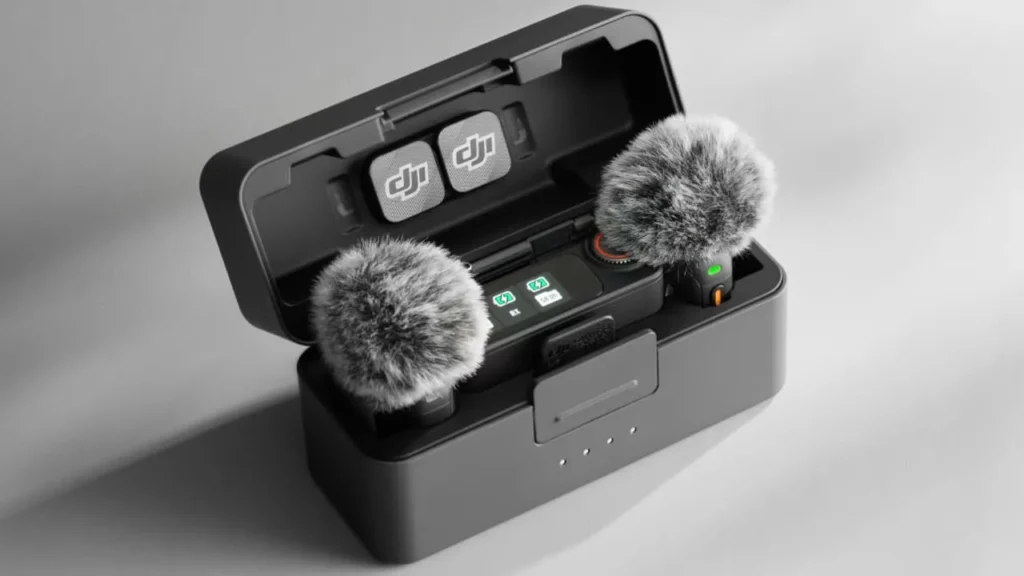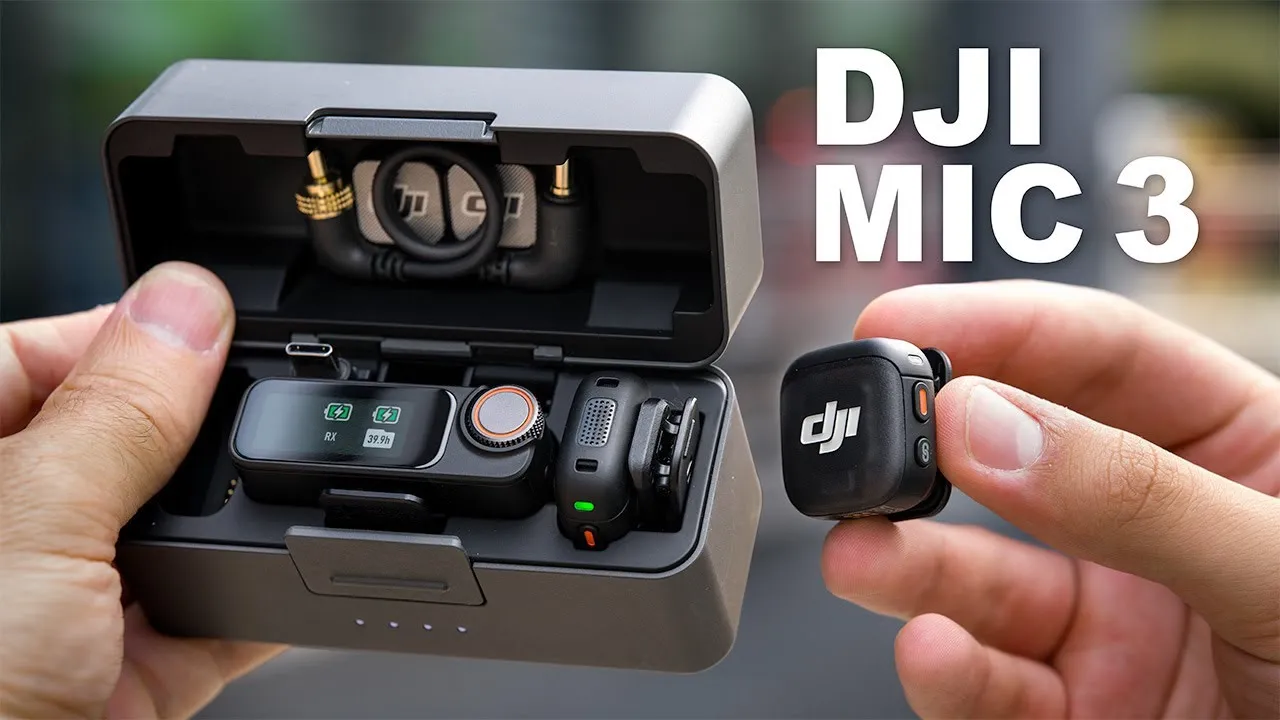The DJI Mic 3 delivers some serious upgrades in a compact body, letting you mic up more people with less hassle. But it doesn’t get everything right, and one missing feature could be a deal-breaker for audio purists.
DJI Mic 3 supports four-person recording

Yes, the rumors are true: the Mic 3 now lets you record up to four subjects at once. You can pair four transmitters with up to eight receivers, giving creators full flexibility across multi-cam setups or podcast panels. It’s not bundled that way by default, you’ll need to buy extra gear, but the option’s there if your shoot demands it.
Smaller, lighter, and more discreet
Compared to its predecessor, the Mic 3 sheds bulk. The new transmitters weigh just 16 grams and come with a rotating clip for easier, lower-profile mounting. It even lets you keep the windscreen and magnet attached when stowing them in the case. That’s a rare bit of design common sense.
Battery life is solid, too:
- Transmitters: 8 hours each
- Receiver: 10 hours
- Charging case recharges all components 2.4x (total 28 hours)
This makes the Mic 3 a strong pick for travel-heavy creators or extended shoot days.
Voice tone presets bring subtle polish
One standout addition is tone shaping. You can now toggle between Regular, Rich, or Bright presets depending on vocal pitch. For instance, the Bright setting gives extra edge to softer or higher voices, while Rich warms up deeper tones.
In tests, Regular handled most voices without needing post-EQ. It’s not flashy, but it saves time in the edit.
No 3.5mm input on this model
Here’s where DJI made a surprising call: the 3.5mm mic jack is gone. Unlike the Mic 2, there’s no option to connect a wired lav. You’re stuck with the onboard mic, and while it sounds decent, it might not cut it for every use case.
For pros working in broadcast or those who prefer the control of external lavaliers, this isn’t great news.
Is the DJI Mic 3 still worth it?
Despite that omission, the Mic 3 is still packed with features:
- Dual gain modes (Automatic + Dynamic)
- 32-bit float dual-file recording
- Timecode support for easy video sync
- Quad-channel recording on select Sony cameras
- Bluetooth + USB-C smartphone pairing
- OsmoAudio integration for DJI cameras
The performance is reliable, and the sound holds up well under pressure. But the missing jack will be a dealbreaker for a few. For the rest? It’s a strong upgrade with few excuses left.
Talk clean. Record fast. Choose what matters.














